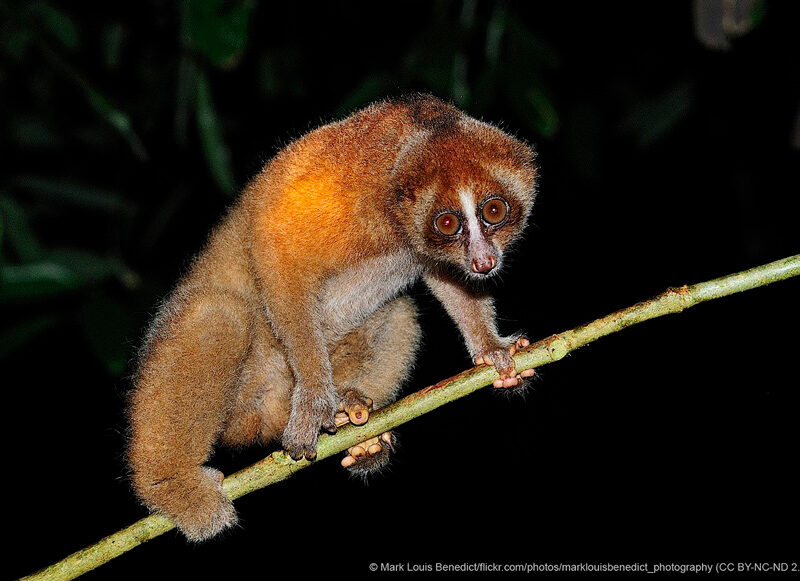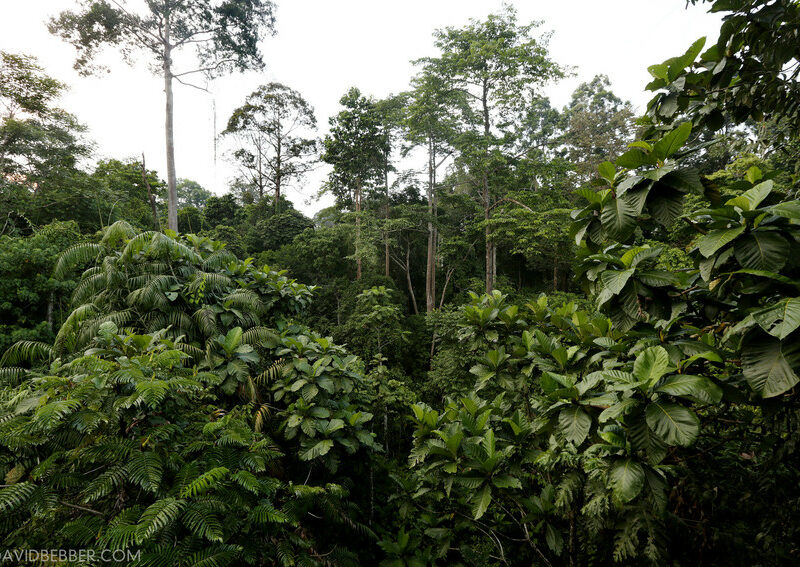Species Data
Class: Mammalia
Order: Primates
Family: Lorisidae
Scientific Name: Nycticebus menagensis
IUCN Red List status:Vulnerable
Description
The name ‘loris’ is Dutch for ‘clown’, a possible allusion to the rounded head and rings around a Slow Loris’s large forward-facing eyes – an essential light-capturing feature for a nocturnal species that relies on their night vision.
There are eight subspecies of Slow Lorises currently, although the broader difficulties around identification within this primate group is expected to lead to new discoveries in the future2. All Slow Lorises are similar in size with furry bodies, short ears, smell-enhancing wet noses and opposable digits for gripping and moving through trees. All Slow Lorises are nocturnal and venomous, with venom both used to bite if necessary and to cover their coats, reducing threats from predation. There is no known antidote.
The Philippine Slow Loris, the smallest of all species within the group, weighs approximately 300g and is easily recognisable due to its pale-red-to-golden colouration.
Behaviour
Instead of leaping and swinging from branch to branch as other arboreal primates do, the Philippine Slow Loris travels slowly and methodically, with one hand moving forward whilst the opposing foot follows, along the tree branches.
Philippine Slow Lorises will forage over eight kilometres each night for invertebrates, fruits, saps and even small vertebrates including lizards. With great balance they will perch on their back feet whilst reaching with their hands to hoist themselves slowly up to the next branch, before continuing their search for food.
Although a solitary species, they do exhibit social communication with the rest of the group and to help attract mates, through scent trails. When two Philippine Slow Lorises come into contact they will often ignore each other. If they choose to connect, they will silently groom one another.
The slow movements, quiet communication, absence of any alarm calls and nocturnal behaviour are all predator avoidance mechanisms, a means to stay quiet and out of sight. The toxin that covers their bodies, a mixture of saliva and oil secreted from their underarms, helps to further defend this species from attackers, whilst also killing off any parasites.


Habitat
The Philippine Slow Loris is distributed throughout Borneo and the southern Philippines, predominantly occurring in forests. However, its nocturnal nature means it is ultimately difficult to be certain about its habitat preferences.
There have been reports of this species sighted within citrus trees and peat swamp forests, a sign that its distribution range might cover a more diverse set of habitats than previously thought.
Threats and Conservation
For Philippine Slow Lorises, major threats include clearing of forests through slash-and-burn techniques to make space for oil palm plantations. These clearing methods have exacerbated forest fires across the Loris’s distribution range, with Borneo’s sweeping wildfire season of 2015 found to have been especially destructive for this species’ habitat.
The other major threat is from the pet trade, where the Loris’s fangs are typically removed to ensure human owners’ safety against a venomous bite that can lead to anaphylactic shock. Once this species has entered the pet trade there is very little chance of it being rehabilitated back into the wild.
Currently, the IUCN has classed this species as Vulnerable but have recommended increased monitoring of its population to ensure the status is correct. This is chiefly due to the species’ secretive behaviour, as well as the broader difficulty in telling Slow Loris sub-species apart and likelihood that new ones will be identified in the future.
For years now and continuing with two new purchases to expand the Pangi corridor in 2021, donations from WLT supporters have been helping partner Hutan to protect the rainforests of the Kinabatangan Floodplain, a confirmed home for the Philippine Slow Loris.
